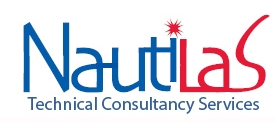Hydraulic and two stroke engine piston rods are oscillating parts requiring very low roughness and high precision on their running surfaces for good oil control and low wear of the sealing mechanisms. In the hydraulic piston case, depending upon the installation, high corrosion and/or wear resistance may be required such as in marine/off-shore environments. Wear tolerance in such cases is very small as the tiniest flaw on the running surface may result to high fluid leakages. Two-stroke engine piston rods on the other hand, require mainly high resistance to abrasion and scuffing as they oscillate at high frequencies about dead centres within an environment contaminated with hard combustion by-products. Higher wear is acceptable in this application, with the main requirement being the prevention of scuffing marks and scratches which will destroy the sealing package very fast.
Laser Cladding with its fully dense, strongly adhered to the substrate overlays is the ultimate solution to the most demanding applications in this sector. There is no limit to the thickness of the overlay, as depending upon the material multi pass welding can be conducted in order to reclaim the worn out material. The low heat-input and minimal distortions are especially important for these slender parts as well as the capability for hardfacing with a wide variety of corrosion resistant or refractory materials. Therefore although the higher investment costs would seem an offsetting factor, the use of Laser Cladding in this sector is spreading fast. The versatility of the technique, its wide range of applications and the impeccable surfacing capabilities, have attracted the interest of many companies.The main advantages of the technique in this application are:
- Impeccable corrosion resistance and guaranteed bonding to the substrate. Improved performance even compared to HVOF coated rods
- Reduced consumable and labour costs up to 70% compared to GMAW/MIG.Finer overlay thickness is possible (dilution <5%) while retaining chemical and mechanical properties of the filler material.
- Lower labour costs due to low distortion levels, reduced post weld rework and minimised machining allowance
- Hard Chroming process eliminated. Faster turnaround through the use of a single welding process with hardfacing materials.



